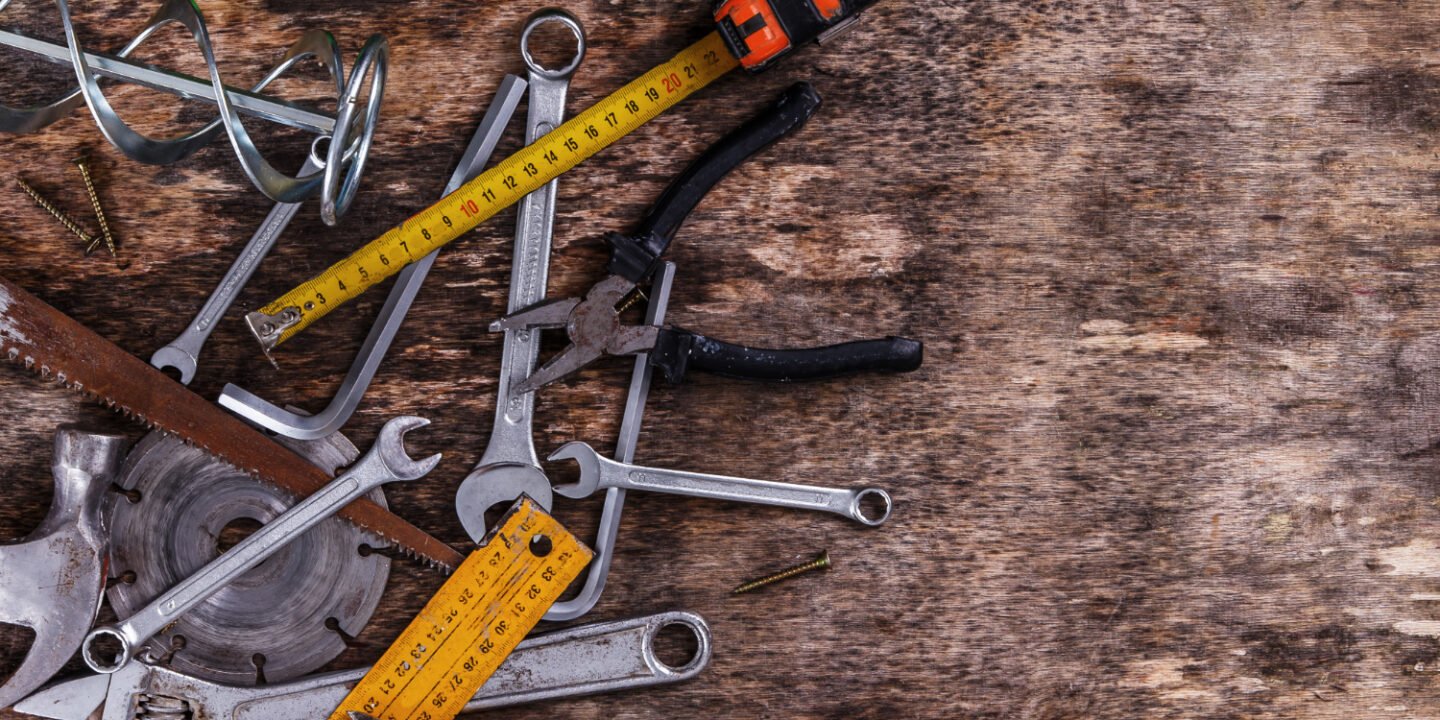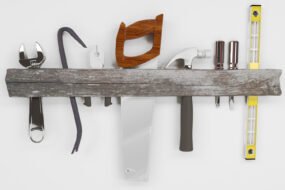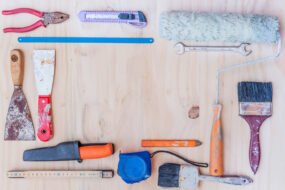
DIY (Do It Yourself) projects can be incredibly rewarding, whether you’re building furniture, redecorating your home, or tackling small repairs. The satisfaction of creating something with your own hands is unparalleled. However, before you embark on any DIY journey, it’s essential to have the right tools and materials on hand. The quality and versatility of your tools can make or break your project, and understanding which materials to use will ensure that your creations are durable, safe, and visually appealing.
This guide will walk you through the must-have tools and materials for any DIY enthusiast. Whether you’re a beginner or a seasoned DIYer, these essentials will help you tackle a wide variety of projects with ease.
1. Basic Hand Tools: The Foundation of Every DIYer’s Toolbox
Before you dive into any project, it’s crucial to have a solid set of basic hand tools. These tools are versatile and serve as the foundation for almost every DIY task. You don’t need to break the bank on high-end versions when starting out. A basic set of well-made hand tools can get you through most projects without any trouble.
Must-Have Hand Tools:
- Hammer: A hammer is one of the most essential hand tools. You’ll need it for driving nails, assembling furniture, or securing objects. Look for a hammer with a comfortable grip and a balanced weight.
- Screwdrivers: A good set of screwdrivers (both flat-head and Phillips) is essential for assembling, disassembling, or repairing furniture, electronics, and fixtures. An ergonomic handle will make them more comfortable for prolonged use.
- Measuring Tape: A measuring tape is indispensable for any DIY project that requires precision. Look for one with a locking mechanism and easy-to-read markings. A 25-foot tape is typically sufficient for most household tasks.
- Utility Knife: Whether you’re cutting cardboard, drywall, or carpet, a utility knife is essential. It’s handy for making quick, precise cuts, and blades are replaceable, making it a long-lasting tool.
- Pliers: Pliers are useful for gripping, bending, and cutting wire, nails, or other small objects. Get a set that includes needle-nose pliers for detailed work and regular pliers for general use.
- Wrenches: A wrench set is essential for tightening or loosening bolts and nuts. Combination wrenches (both open and closed ends) are a versatile addition to any toolbox.
- Level: A level ensures that surfaces and items like pictures or shelves are straight and aligned. For most home projects, a 12-inch level will do.
Pro Tip: Invest in a quality toolbox to keep all your hand tools organized and easy to access. A toolbox with compartments will help you store smaller items, such as screws, nails, and fasteners.
2. Power Tools: Speeding Up the DIY Process
While hand tools are essential, power tools take your DIY game to the next level. Power tools allow you to complete tasks faster, with less physical effort, and often with more precision. While it’s tempting to buy every power tool out there, it’s important to focus on versatility and quality when building your collection.
Must-Have Power Tools:
- Cordless Drill: A cordless drill is perhaps the most essential power tool for any DIYer. It can be used for drilling holes, driving screws, and even mixing paint (with the right attachment). Look for one with multiple speed settings and a comfortable grip.
- Circular Saw: A circular saw is ideal for cutting through wood, plywood, and other materials. It’s an invaluable tool for projects like building furniture, cutting baseboards, or making straight cuts for shelves and cabinets.
- Jigsaw: For making curved cuts, a jigsaw is a must-have. It’s perfect for projects like creating custom shelves, cutting intricate designs, or even making your own artwork from wood or metal.
- Orbital Sander: If you plan to refinish furniture or tackle woodworking projects, an orbital sander will save you tons of time. It ensures smooth, even finishes on wood surfaces, making it an essential tool for projects like repurposing old furniture or sanding down a door.
- Reciprocating Saw: Known for its versatility, the reciprocating saw (often called a “Sawzall”) is great for demolition work, cutting pipes, tree branches, or even breaking through drywall.
- Miter Saw: If you’re planning to cut angles for crown molding, trim, or other projects, a miter saw is an invaluable tool. It allows you to make precise crosscuts and angled cuts with ease.
- Shop Vac: A powerful shop vac is essential for keeping your workspace clean while working on bigger projects. Whether you’re cutting wood, drilling holes, or sanding, having a good shop vac helps minimize mess and dust.
Pro Tip: If you’re unsure about which power tools to buy first, start with a high-quality cordless drill. It’s the most versatile and will be useful for almost every project.
3. Safety Gear: Protect Yourself During Your DIY Projects
Safety should always be your top priority when undertaking any DIY task. With power tools, sharp materials, and chemicals in the mix, it’s easy to overlook safety. However, wearing the proper safety gear can prevent accidents and injuries.
Essential Safety Gear:
- Safety Glasses/Goggles: Protect your eyes from dust, flying debris, and chemicals by wearing safety glasses or goggles. This is especially important when using power tools like saws or drills.
- Ear Protection: Many power tools, such as saws and drills, can produce loud noise that could damage your hearing over time. Invest in a good pair of earplugs or earmuffs to protect your hearing.
- Dust Mask/Respirator: When sanding, cutting, or working with materials that generate dust (such as wood, drywall, or insulation), always wear a dust mask or respirator to protect your lungs from inhaling harmful particles.
- Gloves: A durable pair of work gloves will protect your hands from sharp edges, splinters, or hot materials. For more delicate tasks, opt for a pair of thin, flexible gloves that still allow for precision.
- Knee Pads: If you’re working on the floor or in a position where you’re kneeling for long periods, knee pads will provide cushioning and prevent strain or injury.
Pro Tip: While you may feel tempted to skip the safety gear for “quick jobs,” always wear your safety equipment to avoid accidents, especially with power tools.
4. Materials: Choosing the Right Supplies for Your Projects
Once you’ve got your tools ready, the next step is to choose the right materials for your project. The quality and type of material you use will directly affect the durability, functionality, and appearance of the finished product. Below are some common materials you’ll need for a variety of DIY projects.
Must-Have Materials:
- Wood: From softwoods like pine to hardwoods like oak, wood is one of the most versatile materials for DIY projects. For basic furniture or shelving, pine and plywood are affordable and easy to work with. For more durable, long-lasting pieces, consider hardwoods like oak or maple.
- Paint: Whether you’re refinishing old furniture or painting a wall, having the right paint is essential. Choose paint that’s appropriate for the surface (e.g., chalk paint for furniture, acrylic or latex for walls). Also, make sure you select the correct finish (matte, satin, gloss) based on the look you want to achieve.
- Wood Glue: Wood glue is a must-have for any woodworking project. It provides a strong bond between pieces and can be used in combination with nails or screws for added durability. Always use wood glue specifically designed for woodworking for the best results.
- Screws, Nails, and Fasteners: Having a variety of screws, nails, and other fasteners on hand is essential for most DIY projects. Common screws include wood screws, drywall screws, and deck screws, each designed for specific materials.
- Caulk and Sealants: Caulk is often used for sealing gaps in windows, doors, and bathroom fixtures. Sealants can also help prevent leaks or moisture damage, making them essential for any home improvement project.
- Sandpaper: Whether you’re smoothing rough edges on wood, prepping a wall for painting, or removing old paint, sandpaper is an essential material. Keep a variety of grits on hand, from coarse (for heavy sanding) to fine (for finishing).
- Fabric and Upholstery Materials: If you’re reupholstering furniture, you’ll need fabric, foam, batting, and upholstery tools like a staple gun. Choose durable, high-quality fabric that complements the style of the furniture you’re working with.
- Adhesives: For projects that require more than just nails and screws, adhesives are invaluable. Whether it’s for gluing tiles, mounting shelves, or assembling craft projects, keep a selection of strong adhesives like super glue, epoxy, or construction adhesive.
Pro Tip: Before starting any project, always do your research on the best materials for your specific needs. Choosing the right material will ensure that your project is safe, functional, and long-lasting.
5. Organization: Keep Your Tools and Materials in Order
When working on DIY projects, a messy workspace can lead to frustration and even accidents. Keeping your tools and materials organized is crucial for efficiency and safety. Here are a few organization tips to consider:
- Toolbox or Storage Cabinet: Invest in a sturdy toolbox to keep your hand tools in one place. For larger tools, a storage cabinet or pegboard can help you organize power tools, nails, and screws.
- Storage Bins and Jars: Use clear bins or glass jars to store small items like nails, screws, washers, and nuts. Label each container for easy access.
- Shelving: Install shelves in your garage, workshop, or basement to store larger materials like wood planks, paint cans, and fabric rolls.
Pro Tip: Keep a notebook or digital list of your tools and materials so you can easily check what you have and what you need before starting a new project.
Conclusion
Having the right tools and materials can make your DIY projects easier, safer, and more successful. Whether you’re just starting out or looking to upgrade your current collection, these essentials will equip you with the resources you need to tackle a wide variety of projects. From hand tools like hammers and screwdrivers to power tools like drills and saws, every DIYer needs a solid foundation of equipment.
Remember, start small and build your toolbox over time. As you gain experience and take on more ambitious projects, you’ll be able to identify the tools and materials that best suit your needs.
So, get organized, gather your tools, and start creating! Whether you’re building your dream home, crafting unique decor, or simply fixing something around the house, the right tools will ensure that every DIY project is a success.








